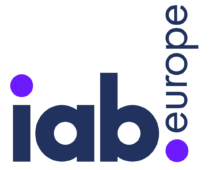As Smile Vun Group (SVG) Launches PrecisionMatch, Nitin Chowdhary, VP, Discusses What The Solution Can Deliver For Clients In APAC
by Ciaran O'Kane on 9th Dec 2012 in News


Nitin Chowdhary is Business Head & Vice President at PrecisionMatch (SVG Media). Here he discusses the roll out of SVG's new personalised trageting solution in the region, as well as developing trends in the APAC display marketplace.
Why did SVG decide to launch PrecisionMatch?
Companies like BlueKai and eXelate were established in the North American market, not in APAC. This offered an opportunity to create a unique offering in the region, to be the APAC regions’s first data provider for digital marketing. This also offered the opportunity to create incremental revenue stream for publishers.
What industry requirements is PrecisionMatch answering? What need-gap are you trying to fill through PrecisionMatch?
Display advertising’s ROI is lagging behind search and social’s because it was less targeted than search and social. Essentially, display was historically bought and sold on the basis of website placements, rather than audience. Almost 60% of internet display inventory is now available in RTB in a disaggregated form. On last count, 20% of display advertising in US has moved to RTB, and the trend is accelerating. In this scenario, the only way to effectively target display advertising is by using targeting data. Without this ROI is destroyed.
A number of publishers are capable of generating good audience insights that should be leveraged across sites, rather than on one site that consumers visit. This creates the ability to make more money for these publishers. In the APAC region, which has about USD $700 million of display advertising spend, supply of inventory outstrips demand about five times. In addition to this, the content being consumed is fragmented. Buying plain impressions no longer drives ROI, so advertisers want to buy audiences rather than impressions. Our solution is to use PrecisionMatch data to buy the right audience. Data-targeted display can improve clickthrough rates by 300%, and postclick engagement by 200%, because the relevance of the audience is significantly improved.
How does PrecisionMatch work?
PrecisionMatch partners with a number of publishers with category content. Users show their affinity with the category by interacting in certain ways, and at a certain intensity, with this content. PrecisionMatch then drops a cookie identifying this user without any personally identifiable information. This cookie enables delivery of targeted ad serving to these users using standard IAB formats.
How does PrecisionMatch-powered data targeting differ from retargeting or behavioural targeting?
Retargeting delivers ads to users that come to the advertiser’s site. Data targeting delivers ads to users that go to other sites that have content in the advertiser’s category. In general, the concept is similar (i.e. show ads to audience segments that have a much higher chance to convert). However, the issue with retargeting is that you’re limited to your own users; it doesn’t bring new users who are engaged with the category.
Behavioral targeting works by identifying low-level patterns of behavior in the network that a user demonstrates before clicking on an ad. There is no integration or partnership with publishers. The ad server then looked for recurrence of these patterns, and based on this, showed relevant ads to this user. This technique suffered from two issues – one, the targeting was still based on a proxy and two, it resulted in very small scale of targeting.
How much of an investment are you making in this business and what revenues/growth are you expecting? When do you expect to break-even?
The initial investment will be about USD $2 million over the next year through internal accruals. We expect to break-even within about two years. After launching in India, Singapore and UAE, we will expand to other countries in the region in 2013.
How does PrecisionMatch fit into the display landscape? Who will be the users of your services?
PrecisionMatch does business via partners. Marketers can use PrecisionMatch data through their media partners i.e. DSPs, Agency Trading Desks and Ad Networks. The initial uptake has been very good. We expect to scale rapidly, led by the demand for quality data from advertisers.
What platform/solution is PrecisionMatch expected to offer? Is it looking at proprietary technology platform/solutions?
We offer a Data Management Platform (DMP) from Adobe. Adobe not only provides us this scalable technology, but also integrates us as part of their partner ecosystem to bring a full digital solution to market. Will build our own technology layer around this platform over time.
Which brands and advertisers are you working with currently?
Samsung, General Motors, Tata Motors, Ford, Snapdeal.com and Expedia.com.
What scale, ROI and reach is PrecisionMatch expected to offer to its advertisers?
We will get to 50 million unique users within a short period of the launch, which is about 60% of the internet population in the three regions that we’re going live in i.e. India, Singapore and UAE.
How ready is the region to adopt PrecisionMatch datasets across real-time buying?
I see a fairly high level of awareness around the benefits of using the entire space (i.e. DSPs, RTB and audience data). There are individual pockets of increased adoption, and this is exactly how a new market with potential behaves ahead of data.
I believe that PrecisionMatch’s ability to work at scale will move the cutting edge of this space significantly forward, as before this there wasn’t a central source for high-quality third-party data in the region.
Do you see the scalability challenges that the EMEA market has experienced around the adoption of paid third-party audience data happening in APAC?
I believe that the scalability challenges in the EMEA region have to do with well-established alternative online display advertising in the form of premium site inventory. Given the early-stage nature of the APAC market, it will adopt RTB, DSPs and audience data a lot faster than the other markets -- as we’ve already seen with the tendency of emerging markets to leapfrog other established markets in mobile.
A trend seen emerging is that the provisioning of third-party data should be transparent to the buyer and also enable segment customisation, does this factor in your business model?
Yes – we are making customised segments generated through the look-alike modeling capability, which is a central part of our service offering. This will be critical to increase publisher monetisation.
What sort of pricing models do you deploy?
Audience Data is sold largely on impression CPMs against this data whenever we can integrate to get reporting setup. In some (very limited number of) cases, we also deliver a finished product (i.e. CPC or CPA) to the advertiser.
What buying platforms are you connected to? Can you explain the technology relationship you have with Adobe and Appnexus?
At the moment, we are live on Appnexus. We will integrate into a number of DSPs including Brandscreen, ATOM, InviteMedia etc.
AdvertiserAPACProgrammaticTargeting








Follow ExchangeWire